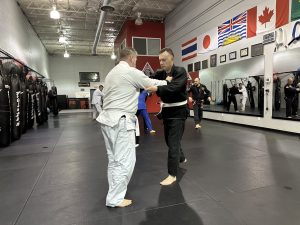White Belt BJJ Mistakes: Ineffective Gripping

Ineffective Gripping, poor posture and base are common mistakes for white belt Brazilian Jiu-Jitsu (BJJ) practitioners. Here’s why they’re important and how to improve them.
In Brazilian Jiu-Jitsu (BJJ), gripping is a fundamental aspect that can significantly influence your effectiveness on the mats. As a white belt, it’s common to make mistakes when it comes to gripping.
Overcommitting to Grips
White belts often grip too hard or hold onto grips for too long, which can lead to fatigue and being easily countered. Instead, focus on gripping just enough to control your opponent without exerting unnecessary energy. Learn to feel when your grip is becoming less effective and be ready to release and regrip as needed.
Ignoring Grip Fighting
Neglecting grip fighting can put you at a disadvantage from the start of a match. Work on establishing your grips while simultaneously breaking your opponent’s grips. Develop the ability to anticipate your opponent’s grips and disrupt them before they become established.
Using Only One Grip
Limiting yourself to only one type of grip reduces your options for controlling and manipulating your opponent. Practice using a variety of grips, including collar grips, sleeve grips, lapel grips, and pant grips. Experiment with different combinations to find what works best for your style of play.
Inconsistent Gripping
Inconsistent gripping can make it easier for your opponent to predict your movements and counter your attacks. Work on developing a strategic approach to gripping based on your game plan. Plan ahead and think about how your grips will set up your next move or submission attempt.
Neglecting Grip Maintenance
Grip strength and endurance are essential in BJJ, but neglecting grip maintenance can lead to early fatigue and decreased effectiveness. Incorporate grip-specific exercises into your training routine, such as grip strengtheners, gi pull-ups, and towel hangs, to improve your grip strength and endurance over time.
Not Using Grips to Control Posture
Grips should not only control your opponent’s movement but also their posture. Learn to use your grips to break down your opponent’s posture and create openings for attacks or sweeps. Focus on controlling the distance between you and your opponent by adjusting your grips as necessary.
Failing to Adapt
Every opponent is different, so it’s essential to adapt your gripping strategy based on your opponent’s size, strength, and style of play. Be prepared to adjust your grips on the fly and switch between offensive and defensive grips as the situation demands.
Final Thoughts
By recognizing and correcting these ineffective gripping mistakes, you can improve your overall performance in BJJ and develop a more well-rounded game on the mats. Remember to be patient and consistent with your training, as mastering the art of gripping takes time and practice.

